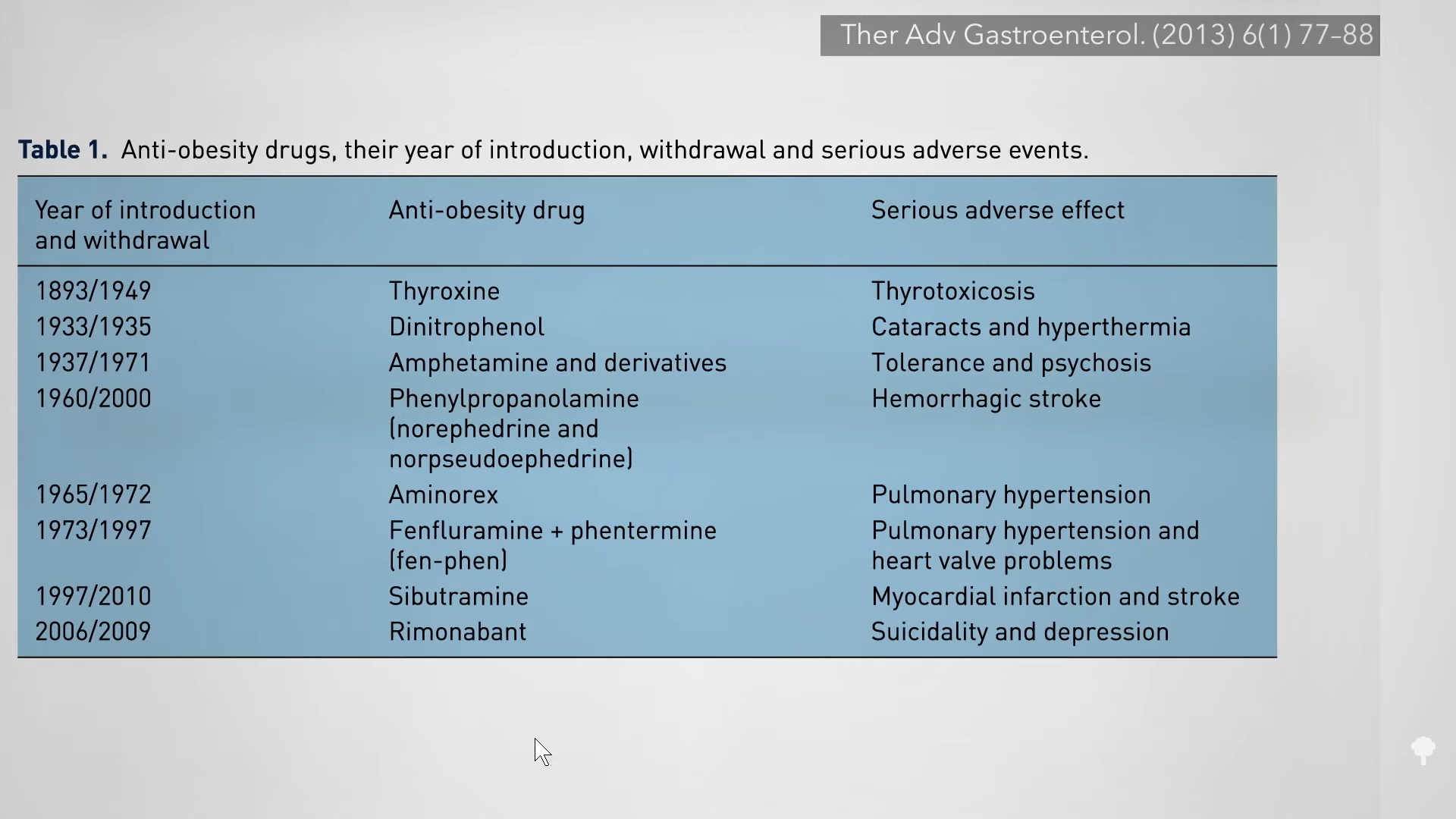Why don’t more people take the weight-loss medications currently on the market?
Despite the myriad menus of FDA-approved medications for weight loss, they’ve only been prescribed for about 1 in 50 patients with obesity. We tend to worship medical magic bullets in the United States, so what gives? As I discuss in my video Friday Favorites: Are Weight-Loss Supplements Safe and Effective?, one of the reasons anti-obesity drugs are so “highly stigmatized” is that, historically, they’ve been anything but magical and the bullets have been blanks—or worse.
To date, most weight-loss drugs that were initially approved as safe have since been pulled from the market for unforeseen side effects that turned them into a “threat to public health.” As you may remember from my video Brown Fat: Losing Weight Through Thermogenesis, it all started with DNP, a pesticide with a promise to safely melt away fat that melted away people’s eyesight instead. (That actually helped lead to the passage of the landmark Food, Drug, and Cosmetic Act in 1938.) Thanks to the internet, DNP has made a comeback with “predictably lethal results.”
Then came the amphetamines. Currently, more than half a million Americans may be addicted to amphetamines like crystal meth, but the “original amphetamine epidemic was generated by the pharmaceutical industry and medical profession.” By the 1960s, drug companies were churning out about 80,000 kilos of amphetamines a year, which is nearly enough for a weekly dose for every man, woman, and child in the United States. Billions of doses a year were prescribed for weight loss, and weight-loss clinics were raking in huge profits. A dispensing diet doctor could buy 100,000 amphetamine tablets for less than $100, then turn around and sell them to patients for $12,000.
At a 1970 Senate Hearing, Senator Thomas Dodd (father of “Dodd-Frank” Senator Chris Dodd) suggested that America’s speed freak problem “was no by means an ‘accidental development’: ‘Multihundred million dollar advertising budgets, frequently the most costly ingredient in the price of a pill, have, pill by pill, led, coaxed and seduced post-World War II generations into the ‘freaked-out’ drug culture…’” I’ll leave drawing the Big Pharma parallels to the current opioid crisis as an exercise for the viewer.
Aminorex was a widely-prescribed appetite suppressant before it was pulled for causing lung damage. Eighteen million Americans were on fen-phen before it was pulled from the market for causing severe damage to heart valves. Meridia was pulled for heart attacks and strokes, Acomplia was pulled for psychiatric side effects, including suicide, and the list goes on, as you can see below and at 2:51 in my video.

The fen-phen debacle resulted in “some of the largest litigation pay-outs ever seen in the pharmaceutical industry, with individual amounts of up to US$200,000 and a total value of ~US$14 billion,” but that’s all baked into the formula. If you read the journal PharmacoEconomics (and who doesn’t!), you may be aware that a new weight-loss drug may injure and kill so many that “expected litigation cost” could exceed $80 million, but Big Pharma consultants estimate that if it’s successful, the drug could bring in more than $100 million, so do the math.
What does work for weight loss? I dive deep into that and more in How Not to Diet. For more of my videos on weight loss, check out the related videos below.
